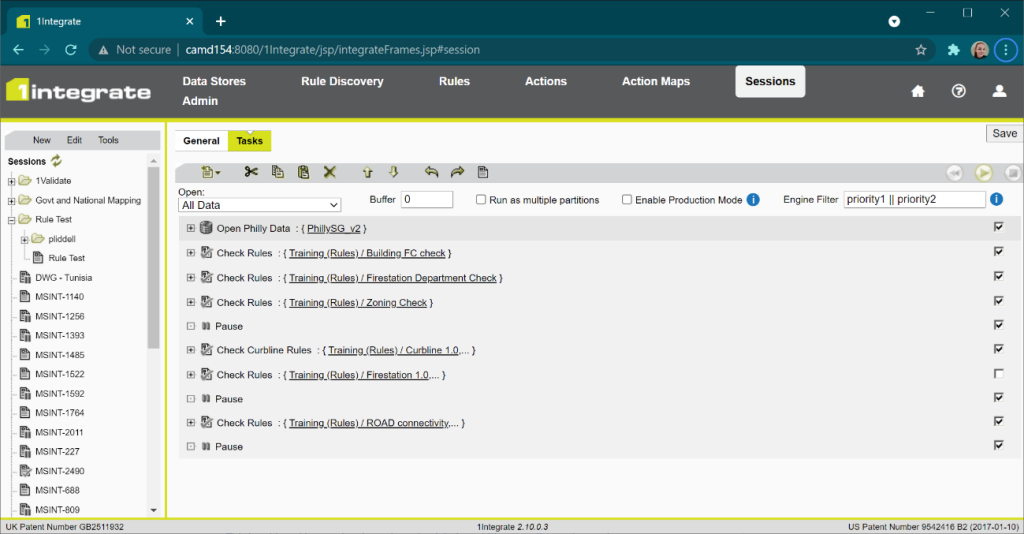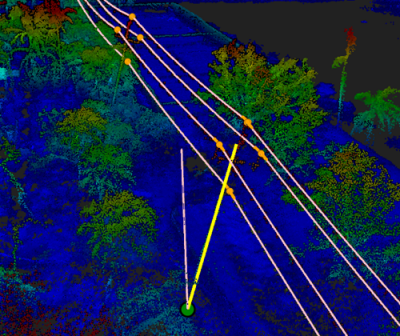Master Data Management (MDM) is the process of connecting and combining data from multiple sources across different systems to enable better analysis. Software for MDM can help to organize data centrally, to bring users closers to making more informed decisions with the data they have in hand. Location MDM (LMDM) integrates location and spatial data and can harmonize it with non-spatial datasets for richer insights.
1Spatial provides LMDM applications via the 1Spatial Platform. Their solutions are used for data governance, facilitating the efficient, effective and sustainable operation of their global customers. Their clients include national mapping and land management agencies, utility companies, transportation organizations, government and defense departments.
1Integrate and 1Data Gateway software
1Integrate and 1Data Gateway are software products that can be deployed locally or accessed via the Cloud. 1Integrate is 1Spatial’s core product and allows users to easily create and maintain a library of rules to which their data must conform and requires no programming knowledge.
Users can automatically highlight and fix geometries and attributes, enabling them to remain confident that their data is compliant to the standards they set or their regulatory requirements. This process can also be used to automate a variety of different projects such as the transformation of schematics, generalization and positional accuracy improvement and is proven to be much quicker and easier than writing traditional database queries or script languages. Rules can then be applied to a variety of data formats via “sessions”, as part of simple customizable workflows.
1Data Gateway is an additional interface to 1Integrate, acting as an easy portal for users to submit their data and validate it against rules and sessions already created in 1Integrate. It allows for a level of abstraction – data submitters don’t need to be familiar with data schemas or how the rules are written, and data owners can control who submits data and how it is processed. Data validation results and reports are returned quickly, and dashboards are available on-demand to report on data quality and submission metadata. It provides secure authorized access only.
1Integrate and 1Data Gateway use cases
A typical use-case where the two products would be combined might be a utility company who defines their data quality standards in 1Integrate and then use 1Data Gateway as a submission portal for multiple contractors across multiple regions.
Another good example can be seen in transportation infrastructure build and maintenance projects, where large and complex activities require support from multiple tiers of different organizations, each with their own functional expertise. Environment and Ecological Impact Assessments (EIAs) are mandated in the enabling phases of build projects and aim to minimize harm and to maximize benefits for biodiversity resulting from any new infrastructure build.
Two of Europe’s most prominent and innovative engineering and construction companies – Laing O’Rourke and Murphy – have come together to form LM, a powerful joint venture, combining both of these products to create their Ecology Survey Data Quality Portal, which can be used by JV suppliers to ensure only data confirming to the HS2 specifications is submitted to them.
A new extended REST API
1Data Gateway 2.4 now has an extended REST API enabling automated submission of data from other applications, whilst maintaining access control and security of their data supply chain. Submission metadata can be passed back into 1Integrate sessions for downstream processes and analysis.
Previously, 1Data Gateway users logged in to the portal, and used that interface to submit their data. 1Data Gateway can also be controlled programmatically via its API. Also, the API allowed users to fetch the results of their data submission process and pull that into their own external applications to perform analytics, like PowerBI. The addition of the submission features to the API now extends the product's flexibility even further. Now users can not just get the results of a submission back using the API, they can programmatically call and submit a processing job as well, from their own applications, providing a flexible and alternative method to using the portal interface manually.
Fast-tracking sessions
1Integrate 2.10 can also be configured to “fast-track” certain sessions onto higher priority engines, ensuring important submissions are never left queuing behind other routine jobs. 1Integrate can be scaled for larger enterprise productions by increasing the number of “engines” it has licensed and available. Data is validated against user-defined rules by running “sessions”, and each engine can run one session at a time. This means if a user only has one engine, only one session can run at a time, and sessions will be queued up in order of creation.
Sessions will automatically be assigned to the next available engine, or if none are available, it will join a “queue”. In an example installation with five engines, a user might want to label one engine “priority1” and have it reserved for sessions that are deemed critical. This means those sessions will never queue on the other four engines but instead will be sent to the prioritized engine.
 This is achieved in practice through labels applied to the engines and filters applied to the sessions, to determine upon which engines they should run. In the image representing an example session (above), a filter of “priority1 || priority2” applies a logical OR statement so that the session can run on any engines labeled priority1 or priority2.
This is achieved in practice through labels applied to the engines and filters applied to the sessions, to determine upon which engines they should run. In the image representing an example session (above), a filter of “priority1 || priority2” applies a logical OR statement so that the session can run on any engines labeled priority1 or priority2.
Header photo by CHUTTERSNAP on Unsplash






